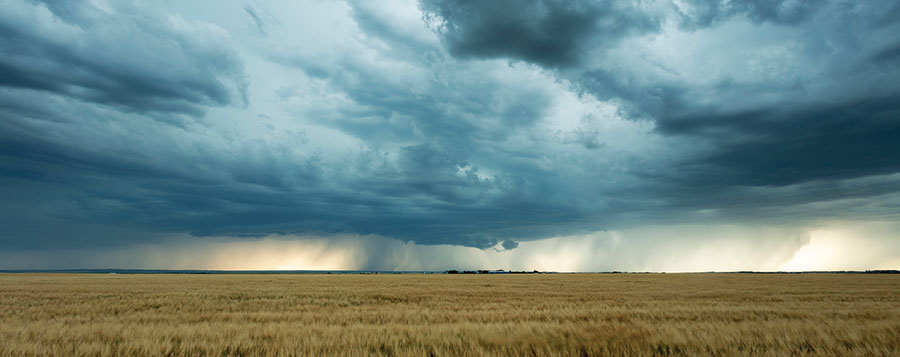Which risk management programs are right for your farm?
What are the potential risks to your projected income, and what farm insurance programs can mitigate them?
MNP’s interactive Ag Risk Management Projector (ARMP) can help farmers answer those questions by providing them insight into the costs and benefits of numerous insurance risk management programs, and how to tailor them for their specific operations.
Projecting income
“Forecasting an income statement is the start of the process, and requires clients to provide their MNP advisors a history of their financial statements”, says Steve Funk, MNP director of agriculture risk management resources. The historical income statement is used to estimate the balance of costs on the income statement, and factor in recent key trends like fuel cost increases.
From there, they discuss crop plans for the upcoming year, such as the intended crops to be planted, the number of acres for each crop, their anticipated prices, as well as input costs – seed, chemicals, fuel – on a crop-by-crop basis.
“Because we’re projecting a complete income statement, we’re showing not only potential revenue risks, which could be production or price risks, but we’re also showing potential risks in expenses, too,” says Funk.
It’s through creating a forecast that one can determine the factors that could affect it. There are typical risks like a hail storm, tornado or flood, but recent years have brought issues nobody saw coming, like COVID-19 and its wide-ranging effects.
“For those who’ve forecasted their income statement, it’s a question of what’s the worst thing that can happen, or what are some likely things that could happen and what impact would that have on my income statement,” says Funk.
Generating an income and risk forecast also assists lenders in better understanding how income loss may impact a producer’s debt service.
After creating a reasonable income statement estimate for their current year, client and advisor can begin modelling risk management products.
Risk management programs
ARMP can be used to model products and coverages of AgriStability, crop insurance, Global Ag Risk Solutions (GARS), and Just Solutions, where applicable, to compare price and production loss scenarios, and show which combination of programs will be optimal in reacting to various losses.
“It’s a very complicated thing, and you have to understand not only your own financial statements, but a little bit about each of these programs and how they work in order to rough out any numbers at all,” says Funk.
“We’re trying to simplify decision-making for producers to help them make a better decision, so they can sleep at night knowing that they’re covered.”
—Steve Funk
In brief:
- AgriStability is a joint federal, provincial and territorial business risk management program designed to help farmers manage large income declines due to market conditions, production losses or higher costs of production.
- Crop insurance is a federal-provincial-territorial business risk management program in which producers and governments share premium costs.
- GARS offers multi-peril tailored production cost insurance that covers seed, fertilizer and chemicals, plus a gross margin the farmer chooses above those costs.
- Just Solutions provides cash flow protection to Western Canadian producers with its Ag Right Risk Management policy coverage that deals with yield, grade and price.
“We’re trying to simplify decision-making for producers to help them make a better decision, so they can sleep at night knowing that they’re covered,” says Funk.
MNP advisors can also investigate how different combinations of programs can work under various scenarios, thereby helping evaluate and determine a client’s annual insurance risk management strategy. For instance, as proceeds from private insurance no longer offset AgriStability payments, farmers can conceivably double up on coverage if they take AgriStability and private insurance.
When to run the numbers
ARMP is designed for farmers entering a new year to project their potential outcomes and consider the best risk management strategies to deal with the risks. But it doesn’t have to end there. It also allows producers to update what’s happening throughout the growing season and after harvest, study cash flow, assess damage after major weather events and determine if any program payments should be expected.
Even if ARMP isn’t utilized at the start, producers can still make use of it partway through the year if an unexpected situation has arisen and they want to know how the risk management products they purchased will help them. “We can actually use this tool to mock that up and do some estimates that way,” says Funk.
ARMP isn’t limited to MNP clients alone, but is also available to growers who get their accounting, tax and other work done elsewhere.





